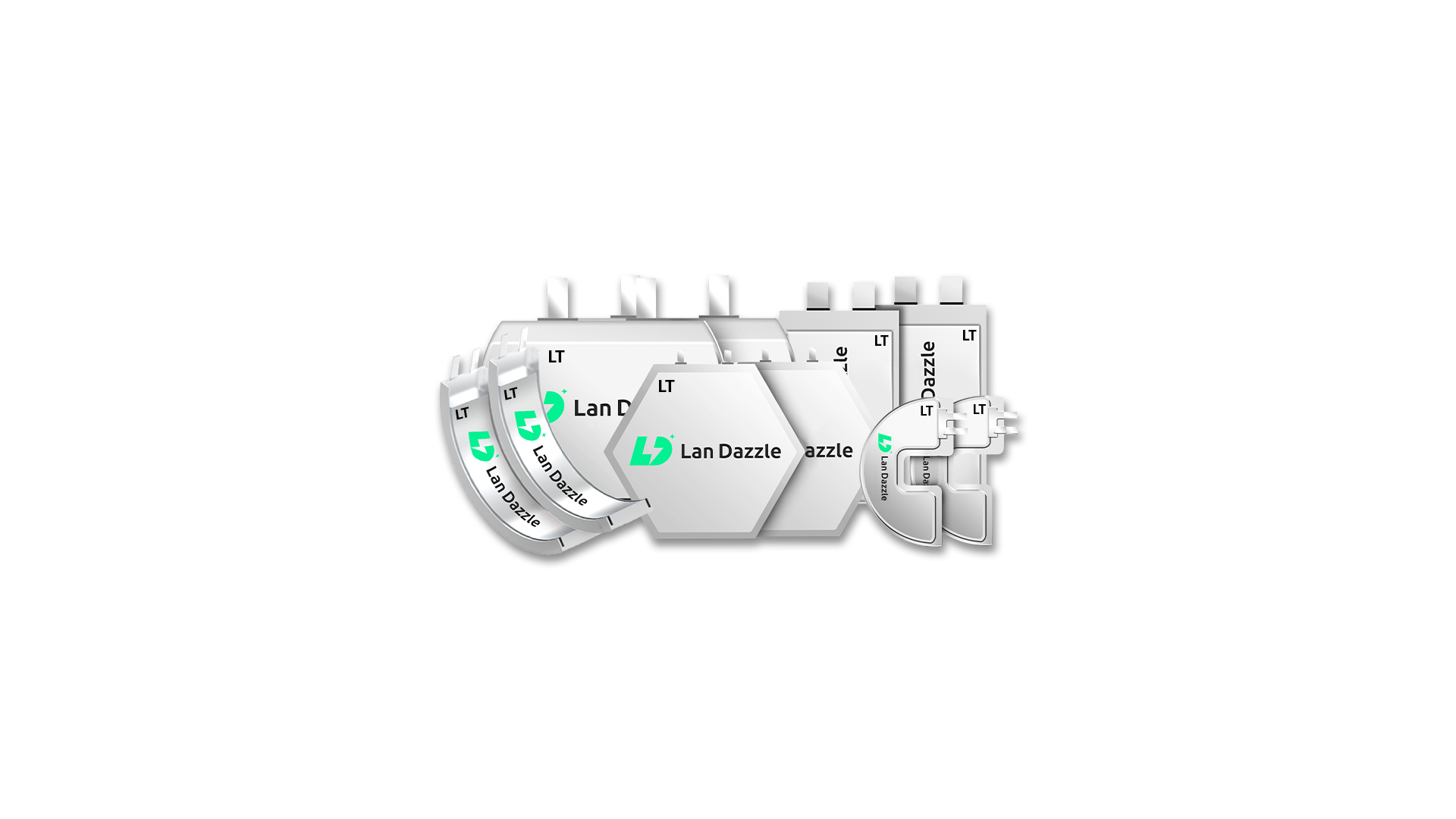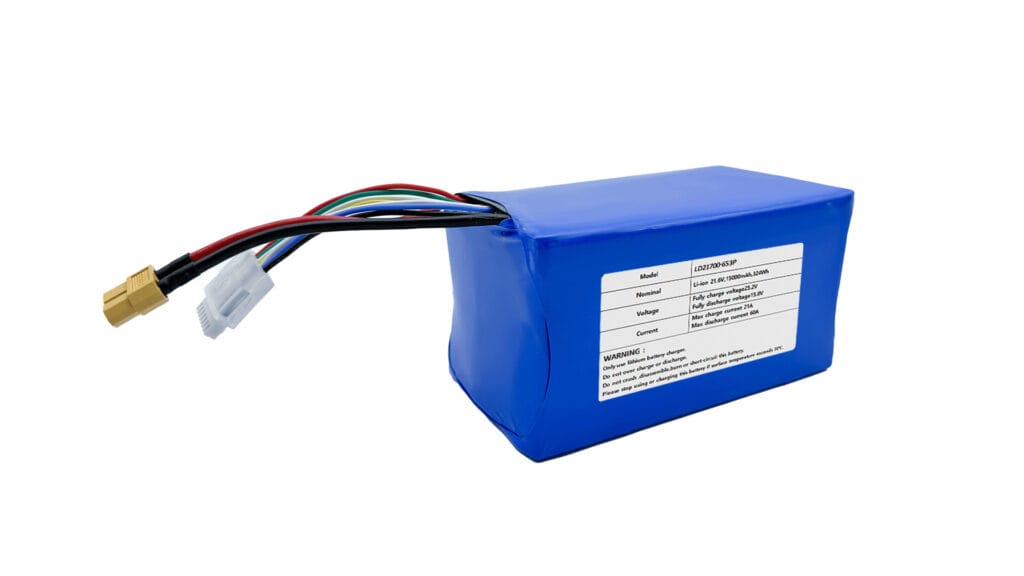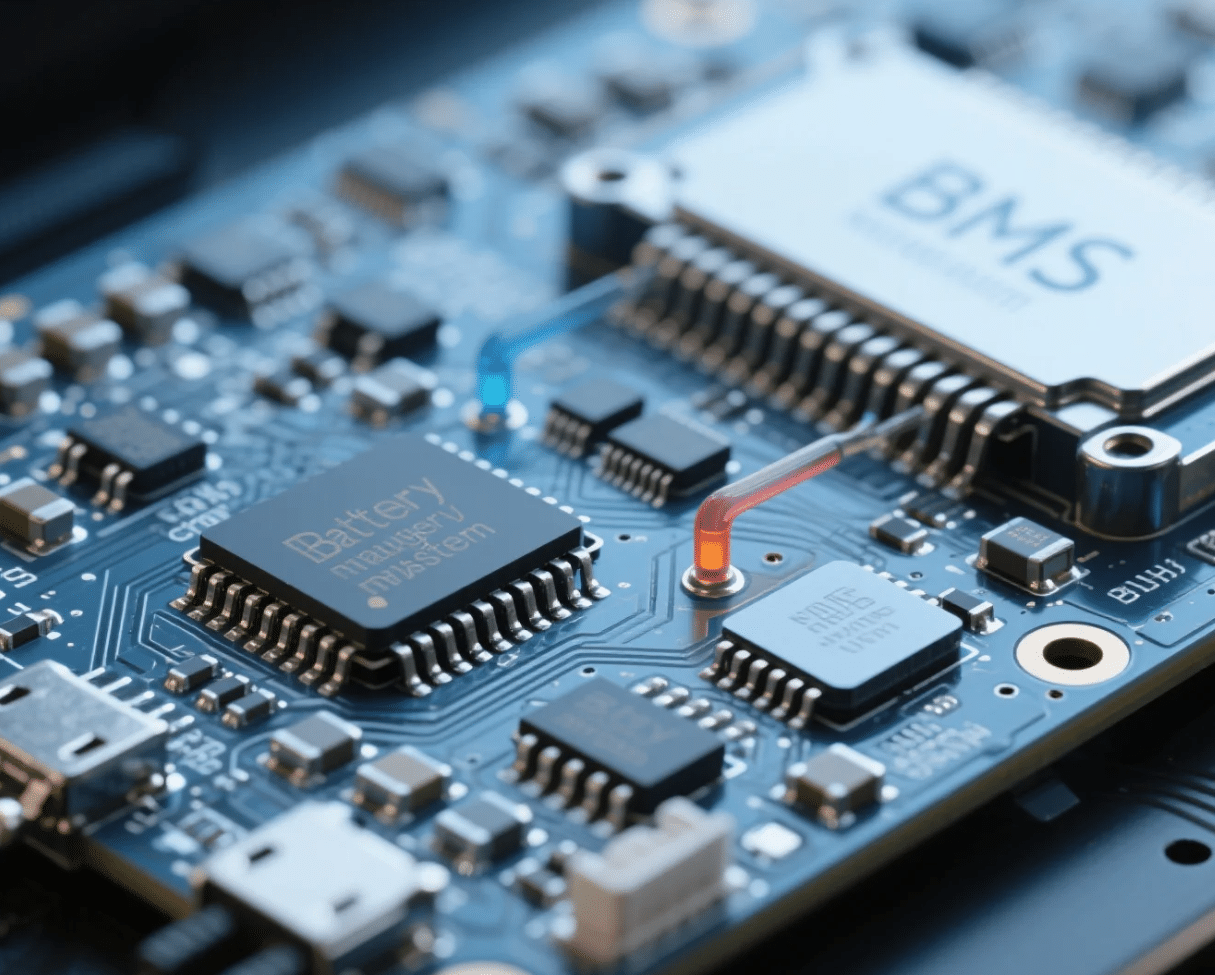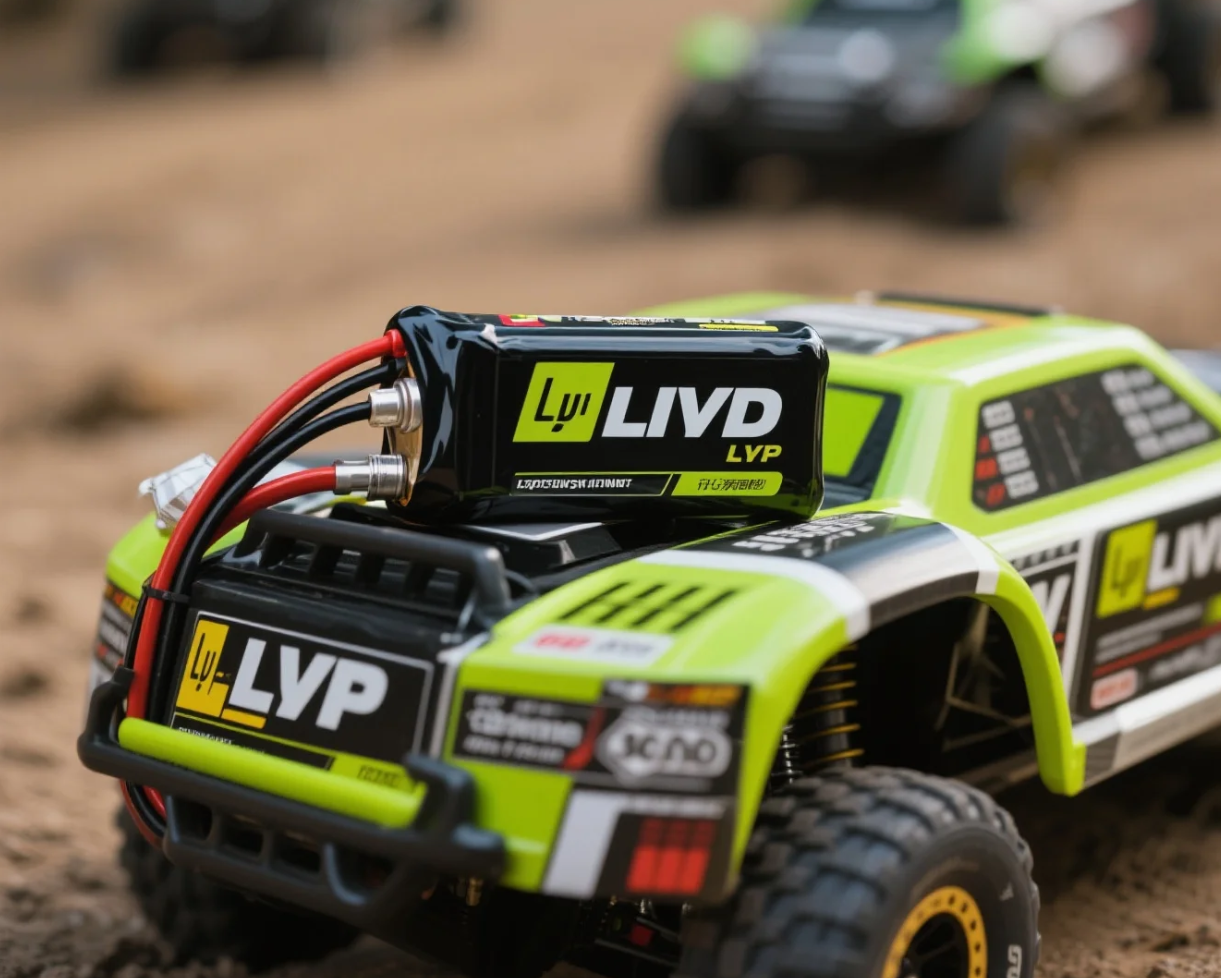La batterie d'une voiture RC : le guide ultime pour choisir la meilleure batterie de voiture RC
Le plaisir de commander une machine miniature, qu'il s'agisse de franchir des sauts, de conquérir un terrain rocailleux ou de dériver avec précision, est au cœur du hobby des voitures RC. Mais la véritable puissance de ces expériences exaltantes réside dans un héros méconnu : la batterie. Le choix de la bonne batterie de voiture RC, en particulier dans le paysage actuel dominé par la technologie Lithium Polymer, peut faire la différence entre une course terne et une aventure pleine d'adrénaline.
Ce guide complet démystifie le monde des batteries LiPo pour voitures RC. Nous décomposons les spécifications essentielles, expliquons comment adapter la batterie à votre type de voiture RC et donnons des conseils de sécurité essentiels pour garantir à la fois des performances palpitantes et la tranquillité d'esprit. Que vous soyez un débutant qui vient de déballer sa première voiture RC ou un passionné chevronné à la recherche de performances optimales, il est primordial de savoir comment choisir la bonne batterie de voiture RC.
Comprendre les bases des batteries de voitures RC
La batterie fournit l'énergie électrique qui alimente le moteur, le récepteur et les servos de votre voiture RC. Bien qu'il existe encore des technologies plus anciennes comme l'hydrure métallique de nickel (NiMH), les batteries LiPo sont devenues l'étalon-or pour la plupart des applications RC axées sur les performances. Cela est dû en grande partie à leur rapport poids/puissance supérieur, à leur densité énergétique plus élevée et à leur capacité à fournir un courant important.
Toutefois, cette puissance s'accompagne de responsabilités. Comprendre les principales spécifications imprimées sur une batterie LiPo est la première étape pour prendre une décision éclairée :
- Tension (V) : La tension est la pression électrique. Une tension plus élevée se traduit généralement par une vitesse plus élevée du moteur et une plus grande puissance. Les tensions LiPo courantes pour les voitures RC sont 7,4V (2S - 2 cellules en série) et 11,1V (3S - 3 cellules en série).
- Capacité (mAh - Milliampères-heures) : Elle indique la taille du "réservoir" de la batterie. Une valeur mAh plus élevée signifie que la batterie peut fournir du courant pendant une période plus longue, ce qui se traduit par des durées d'utilisation plus longues.
- Taux de décharge (cote C) : L'indice C indique la vitesse à laquelle la batterie peut décharger son énergie en toute sécurité. Un indice C plus élevé permet à la batterie de fournir plus de courant au moteur sur demande, ce qui est crucial pour l'accélération et la gestion des situations de forte puissance. Par exemple, une batterie de 5000mAh avec un taux de décharge continue de 50C peut théoriquement délivrer 5000mAh * 50C = 250 Amps en continu.
Comment choisir une batterie de voiture RC en fonction de son type
Les différents types de voitures RC ont des besoins en énergie très différents. Un buggy léger conçu pour la vitesse nécessitera une batterie différente de celle d'un véhicule lourd à chenilles axé sur le couple et l'endurance.
- Buggies et camions haute performance: Ces véhicules privilégient les accélérations rapides et les vitesses de pointe élevées. Ils nécessitent généralement des batteries avec tension plus élevée (2S ou 3S, parfois même 4S ou plus pour les utilisateurs expérimentés) et d'un note C élevée (30C et plus) pour fournir la puissance nécessaire au moteur. Le poids est également un facteur important, car une batterie plus légère peut améliorer la maniabilité et l'agilité. Pour un buggy à l'échelle 1/10, une batterie 2S LiPo (7.4V) d'une capacité comprise entre 4000mAh et 6000mAh et un Indice de température de 50C ou plus est un choix courant.
- Crawlers de roche: Les engins à chenilles sont conçus pour évoluer sur des terrains difficiles à des vitesses réduites, en mettant l'accent sur le couple et la distribution contrôlée de la puissance. Bien que la haute tension ne soit pas aussi importante, une bonne capacité (4000mAh à 6000mAh ou plus) est essentielle pour les courses prolongées sur les sentiers. Un indice C modéré (20C à 40C) est généralement suffisante, car l'accent est mis sur une puissance soutenue plutôt que sur des rafales soudaines. A 2S LiPo est un choix populaire pour les chenilles à l'échelle 1/10, offrant un bon équilibre entre puissance et contrôle.
- Voitures de dérive: Le drift nécessite un équilibre entre la puissance pour initier les glissades et le contrôle pour les maintenir. La répartition du poids de la batterie peut avoir un impact significatif sur la maniabilité d'une voiture de drift. Alors que les batteries 2S LiPo sont courantes, le poids d'une batterie 2S LiPo est plus élevé que celui d'une batterie 2S LiPo. la capacité peut être choisie en fonction de la durée de fonctionnement souhaitéeL'indice C devrait être suffisant pour fournir une puissance constante sans surcharger les pneus. L'expérimentation de l'emplacement et du poids de la batterie peut être la clé d'une performance optimale en drift.
- Avions et hélicoptères RC : Bien que cet article se concentre principalement sur les voitures, les principes fondamentaux de la sélection d'un accu LiPo s'appliquent également aux avions RC. La tension, la capacité et l'indice C sont essentiels, mais les types de connecteurs et les dimensions physiques le sont encore plus pour garantir une bonne adaptation et un fonctionnement sûr dans le cadre de la conception de l'aéronef. Respectez toujours les spécifications du fabricant de votre avion ou hélicoptère RC.
En tant que fabricant de batteries lipoLanDazzle peut personnaliser les batteries polymères avec différents paramètres, tels que la tension, la capacité et le multiplicateur de décharge, en fonction de vos besoins. Si vous avez des besoins ou des questions concernant les batteries RC, n'hésitez pas à nous contacter à l'adresse suivante info@landazzle.com.
Principales spécifications à prendre en compte
Il est essentiel de comprendre les chiffres et les abréviations figurant sur l'étiquette d'une batterie LiPo pour faire le bon choix.
- Tension (V) : Le potentiel de puissance La tension d'une batterie LiPo est déterminée par le nombre de cellules connectées en série. Chaque cellule a une tension nominale de 3,7V. Par conséquent, une batterie 2S a une tension nominale de 7,4V (2 x 3,7V), et une batterie 3S de 11,1V (3 x 3,7V). L'utilisation d'une batterie dont la tension est nettement supérieure à celle recommandée pour votre voiture RC peut endommager le moteur et l'électronique.
- Capacité (mAh) : Le facteur d'endurance Une capacité mAh plus élevée se traduit par une durée d'utilisation plus longue, car la batterie peut fournir plus de courant au fil du temps. Cependant, une batterie de plus grande capacité est souvent plus volumineuse et plus lourde, ce qui peut affecter les performances de la voiture, en particulier dans les applications de course où le poids est essentiel. Il convient de trouver un équilibre entre l'autonomie souhaitée et les limites de poids du véhicule.
- Taux de décharge (indice C) : La puissance délivrée L'indice C indique le courant continu maximum qu'une batterie peut délivrer en toute sécurité. Pour déterminer le courant de décharge continu maximal en ampères, il faut multiplier la capacité (en Ah) par l'indice C. Par exemple, une batterie de 5000mAh (5Ah) avec un indice de 30C peut délivrer un courant continu de 5A x 30 = 150 Amps. Assurez-vous que l'indice C de la batterie correspond ou dépasse les exigences du moteur de votre voiture RC en cas de charge maximale. De nombreuses batteries indiquent également une valeur C "d'éclatement", qui est le courant maximum que la batterie peut fournir pendant une courte période.
- Taille et poids : L'ajustement et l'équilibre Avant d'acheter une batterie, vérifiez toujours les dimensions du bac à batterie de votre voiture RC pour vous assurer qu'il est bien adapté. Une batterie trop grande ne s'adaptera pas, et une batterie trop petite risque de se déplacer pendant le fonctionnement. Le poids joue également un rôle crucial dans la maniabilité et les performances. Une batterie plus lourde peut abaisser le centre de gravité, améliorant ainsi la stabilité, mais elle peut également réduire l'accélération et la vitesse de pointe.
La sécurité avant tout : manipulation et chargement des batteries LiPo
Les batteries LiPo offrent des performances incroyables, mais elles doivent être manipulées et chargées avec précaution en raison de leur densité énergétique. Une mauvaise utilisation peut entraîner des dommages, un incendie ou même des blessures.
- Utiliser un chargeur spécifique LiPo : Ne chargez jamais des batteries LiPo avec un chargeur conçu pour d'autres types de batteries. Les chargeurs LiPo ont des algorithmes spécifiques pour charger et équilibrer en toute sécurité les cellules individuelles du pack de batteries.
- La charge d'équilibre est essentielle : La charge d'équilibre garantit que chaque cellule du pack LiPo est chargée à la même tension. Cela maximise la durée de vie de la batterie et réduit le risque de surcharge de certains éléments, ce qui peut être dangereux.
- Ne jamais surdécharger : Évitez de faire fonctionner votre voiture RC jusqu'à ce que la batterie soit complètement déchargée. Une décharge excessive peut endommager les cellules LiPo et réduire considérablement leur durée de vie. De nombreux contrôleurs électroniques de vitesse (ESC) sont dotés d'une fonction de coupure en cas de faible tension pour éviter ce problème.
- Stocker les batteries LiPo en toute sécurité : Lorsqu'elles ne sont pas utilisées, les piles LiPo doivent être stockées dans un endroit frais et sec, à l'écart des matériaux inflammables. Envisagez d'utiliser un sac ou un conteneur de sécurité LiPo pour une protection accrue.
- Vérifier qu'il n'y a pas de dommages : Avant chaque utilisation, vérifiez que votre batterie LiPo ne présente pas de signes de dommages physiques, tels que des gonflements, des perforations ou des fils endommagés. N'utilisez pas une batterie endommagée.
- Ne laissez jamais les batteries en charge sans surveillance : Surveillez toujours les batteries LiPo pendant qu'elles se chargent.
- Éliminer de manière appropriée : Ne jetez pas les piles LiPo à la poubelle. Renseignez-vous sur les réglementations locales en matière d'élimination ou de recyclage.
Bien qu'il soit difficile d'établir des statistiques précises sur les incendies de batteries RC, les rapports d'actualité et les forums en ligne mettent en évidence les dangers potentiels d'une mauvaise manipulation des batteries LiPo. L'adhésion à des pratiques de charge et de manipulation sûres n'est pas négociable pour les amateurs de radiocommunication responsables.
Conclusion
Choisir la bonne batterie de voiture RC, en particulier une LiPo, implique de comprendre le type spécifique de votre voiture RC et ses exigences en matière de puissance, de déchiffrer les spécifications clés telles que la tension, la capacité et l'indice C, et de donner la priorité à la sécurité avant tout. En prenant soigneusement en compte ces facteurs, vous pouvez libérer tout le potentiel de votre véhicule RC, en bénéficiant d'une plus grande autonomie, de vitesses exaltantes et de la confiance qui découle d'une gestion responsable de la batterie. Alors, faites le plein d'énergie avec sagesse et profitez de la balade !
FAQ
- Quelle est la différence entre les batteries LiPo 2S et 3S pour les voitures RC ?
Une batterie LiPo 2S a une tension nominale de 7,4V, tandis qu'une batterie LiPo 3S a une tension de 11,1V. Une tension plus élevée fournit généralement plus de puissance et de vitesse au moteur de la voiture RC. Cependant, assurez-vous que l'électronique de votre voiture RC (moteur et ESC) est conçue pour supporter la tension plus élevée d'une batterie 3S. - Comment savoir de quelle batterie LiPo mAh ma voiture RC a besoin ?
L'indice mAh (milliampère-heure) détermine la capacité de la batterie et donc l'autonomie. Une valeur mAh plus élevée permet généralement d'obtenir des durées d'utilisation plus longues. Tenez compte des limites de poids de votre voiture RC et de l'équilibre entre l'autonomie souhaitée et les performances. Pour une utilisation générale, une batterie de plus grande capacité est souvent préférée, tandis que les pilotes opteront pour un équilibre entre la capacité et le poids. - Que signifie l'indice C d'une batterie LiPo et laquelle dois-je choisir ?
L'indice C indique la vitesse de décharge de la batterie, c'est-à-dire la rapidité avec laquelle elle peut fournir du courant. Un indice C plus élevé est généralement préférable pour les applications à hautes performances nécessitant des poussées de puissance rapides. Choisissez un indice C qui correspond ou dépasse l'intensité maximale du courant absorbé par le moteur de votre voiture RC. Reportez-vous aux spécifications de votre moteur et de votre ESC pour plus d'informations. - Puis-je utiliser une batterie de tension plus élevée que celle dont ma voiture RC est équipée à l'origine ?
L'utilisation d'une batterie dont la tension est nettement supérieure à celle pour laquelle votre voiture RC est conçue peut endommager le moteur, l'ESC et d'autres composants électroniques. Respectez toujours les recommandations du fabricant concernant la tension de la batterie de votre véhicule. - Comment charger et stocker en toute sécurité les batteries LiPo pour ma voiture RC ?
Utilisez toujours un chargeur d'équilibre spécifique à LiPo. Ne jamais laisser les batteries en charge sans surveillance. Stockez les batteries LiPo dans un endroit frais et sec, idéalement dans un sac ou un conteneur de sécurité LiPo. Évitez les températures extrêmes et les dommages physiques. - Quelles sont les meilleures marques de batteries LiPo pour les voitures RC ?
Parmi les marques de batteries LiPo réputées pour leur qualité et leurs performances dans le domaine de la radiocommunication, citons Spektrum, Gens Ace, Venom, SMC et Turnigy. Recherchez des avis et tenez compte de vos besoins spécifiques et de votre budget. - Quelle est la durée de vie des batteries LiPo pour voitures RC ?
La durée de vie d'une batterie LiPo pour voiture RC dépend de plusieurs facteurs, notamment de la qualité de la batterie, de son entretien (charge et stockage appropriés) et de l'intensité de l'utilisation. Si elle est bien entretenue, une batterie LiPo de bonne qualité peut durer plusieurs années ou des centaines de cycles de charge.





